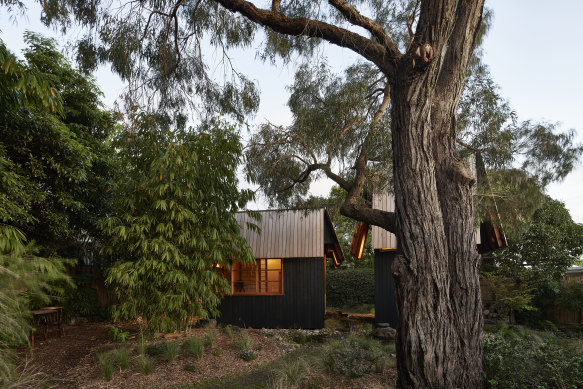
Architect Robin Boyd’s fascination for Japan is well documented in his writings. This attraction was
borne out in many of the homes he designed in the postwar period.
Even project homes, such as Ember House in Melbourne’s suburban Doncaster, designed in the mid-1960s for Consolidated Housing Industries, has a Japanese sensibility, with its raked ceilings, simple form and a strong connection to the garden.

Ember House in Melbourne. Credit: MRTN
For owner Hugh, the house has a strong family history. It was where he grew up and now still lives with his partner.
“It’s quite a modest house of 120 square metres, but I’ve always enjoyed its orientation, with the northern light streaming into the living area,” says Hugh.
“I’ve also enjoyed the quietness of the location, being in a court and away from traffic,” he says,
pointing out the naturalist-style garden his mother created, influenced by landscape designer Edna Walling.
Over the years, Hugh has carefully maintained the three-bedroom house, retaining many of its original fixtures and fittings. The kitchen, with its polished cork floor, remains, as does the open timber shelves that display his mother’s ceramics.
Although there is a large picture window in the living area to benefit from the sunlight, original architect Boyd included a cream-brick open fireplace that delineates the kitchen and creates a focus during the colder months of the year.
“I could see how important this place is for Hugh and what it means to both him and his partner,” says architect Antony Martin, director of MRTN Architects, who was approached to extend the house.
The brief was to create two additional separate spaces. Many designers would have simply added a glass box to the rear of the house to satisfy this requirement. However, Martin went in an entirely different direction.



























